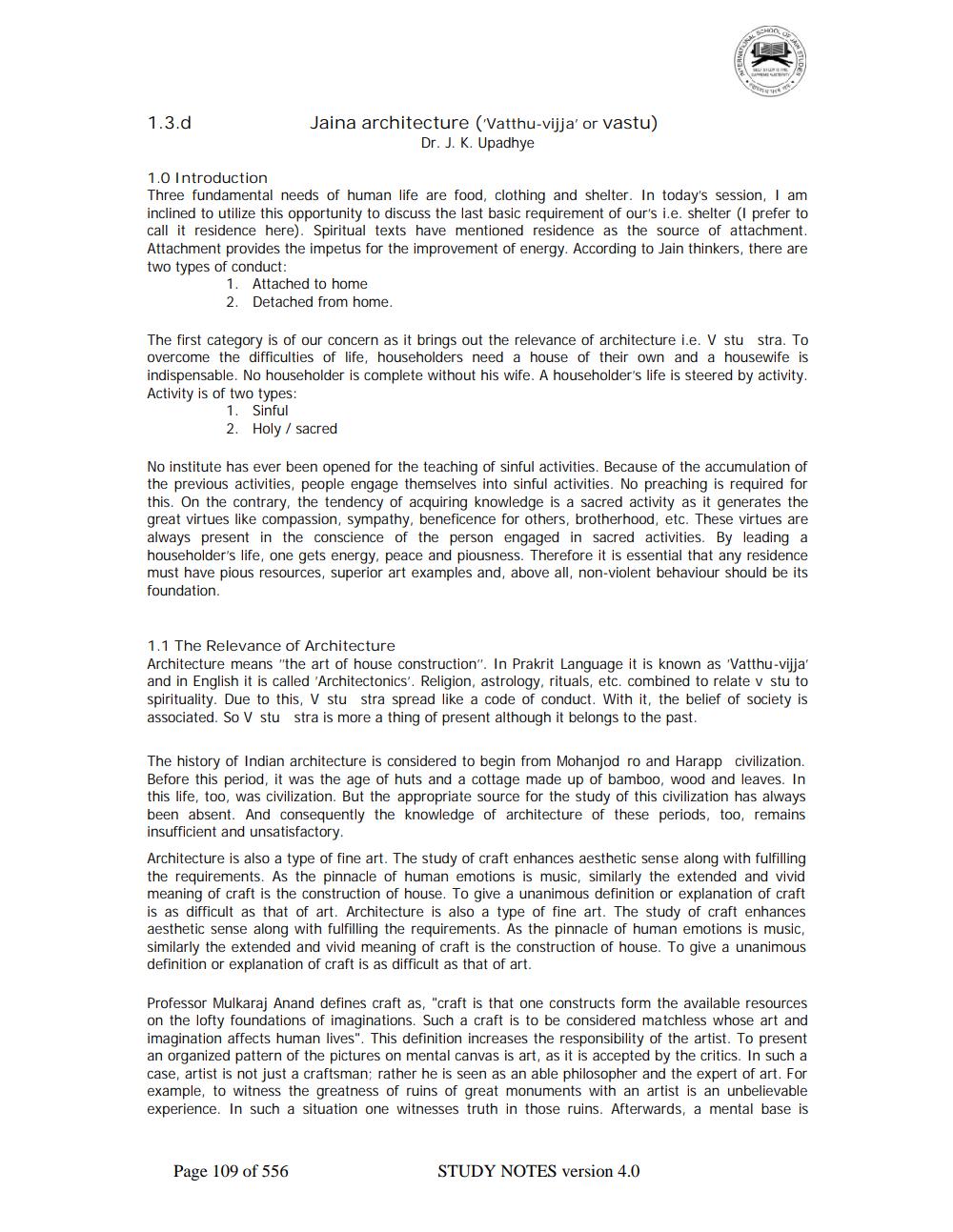________________
1.3.d
Jaina architecture (Vatthu-vijja' or vastu) Dr. J. K. Upadhye
1.0 Introduction
Three fundamental needs of human life are food, clothing and shelter. In today's session, I am inclined to utilize this opportunity to discuss the last basic requirement of our's i.e. shelter (I prefer to call it residence here). Spiritual texts have mentioned residence as the source of attachment. Attachment provides the impetus for the improvement of energy. According to Jain thinkers, there are two types of conduct:
1. Attached to home 2. Detached from home.
The first category is of our concern as it brings out the relevance of architecture i.e. V stu stra. To overcome the difficulties of life, householders need a house of their own and a housewife is indispensable. No householder is complete without his wife. A householder's life is steered by activity. Activity is of two types:
1. Sinful
2.
Holy / sacred
No institute has ever been opened for the teaching of sinful activities. Because of the accumulation of the previous activities, people engage themselves into sinful activities. No preaching is required for this. On the contrary, the tendency of acquiring knowledge is a sacred activity as it generates the great virtues like compassion, sympathy, beneficence for others, brotherhood, etc. These virtues are always present in the conscience of the person engaged in sacred activities. By leading a householder's life, one gets energy, peace and piousness. Therefore it is essential that any residence must have pious resources, superior art examples and, above all, non-violent behaviour should be its foundation.
1.1 The Relevance of Architecture
Architecture means "the art of house construction". In Prakrit Language it is known as 'Vatthu-vijja' and in English it is called 'Architectonics'. Religion, astrology, rituals, etc. combined to relate v stu to spirituality. Due to this, V stu stra spread like a code of conduct. With it, the belief of society is associated. So V stu stra is more a thing of present although it belongs to the past.
The history of Indian architecture is considered to begin from Mohanjod ro and Harapp civilization. Before this period, it was the age of huts and a cottage made up of bamboo, wood and leaves. In this life, too, was civilization. But the appropriate source for the study of this civilization has always been absent. And consequently the knowledge of architecture of these periods, too, remains insufficient and unsatisfactory.
Architecture is also a type of fine art. The study of craft enhances aesthetic sense along with fulfilling the requirements. As the pinnacle of human emotions is music, similarly the extended and vivid meaning of craft is the construction of house. To give a unanimous definition or explanation of craft is as difficult as that of art. Architecture is also a type of fine art. The study of craft enhances aesthetic sense along with fulfilling the requirements. As the pinnacle of human emotions is music, similarly the extended and vivid meaning of craft is the construction of house. To give a unanimous definition or explanation of craft is as difficult as that of art.
Professor Mulkaraj Anand defines craft as, "craft is that one constructs form the available resources on the lofty foundations of imaginations. Such a craft is to be considered matchless whose art and imagination affects human lives". This definition increases the responsibility of the artist. To present an organized pattern of the pictures on mental canvas is art, as it is accepted by the critics. In such a case, artist is not just a craftsman; rather he is seen as an able philosopher and the expert of art. For example, to witness the greatness of ruins of great monuments with an artist is an unbelievable experience. In such a situation one witnesses truth in those ruins. Afterwards, a mental base is
Page 109 of 556
STUDY NOTES version 4.0




